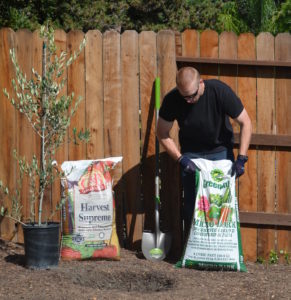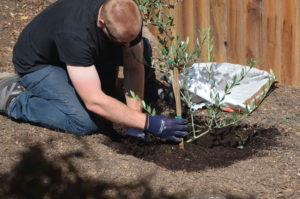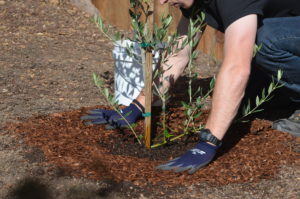How to Plant a Tree Correctly
Planting a tree on your property can offer so many benefits for you and the generations to follow. A tree planted near your house can provide shade or a helpful windbreak, help keep energy costs down, and create a habitat for nearby creatures like songbirds. It can also add to the value and salability of your home.
Planting a tree is more doable than you might think with a few of the tips below. Two people are recommended for this project, especially if your tree comes in a container larger than 5 gallons. To set your new tree up for a long, healthy life, it is important that it is planted correctly.
Choosing the right site and digging a hole that allows the roots to extend and grow without obstruction will ensure that the tree will be well anchored in the ground and able to develop strong branches. A healthy tree that is well planted is less likely to fall over in a storm or drop heavy branches that can cause injury or property damage. Review the tips at The Right Tree for the Right Place to help you select the best tree for the particular location on your property.
Planting at the right time is important too. The best time of year to plant a tree is autumn, which will allow the young tree to establish throughout the wet winter before putting out spring growth. Some deciduous trees, such as apple and peach trees, are available in bare-root form in the winter months so they can be planted when dormant. It’s best to avoid planting most trees in the heat of summer when the hot, dry weather will add too much stress.
Materials List:
- Tree
- Bucket (for soaking bare-root trees)
- Shovel
- Sharp knife
- Pruners
- Measuring tape
- Mulch
Steps:
- Prepare the Hole: Dig a hole the same depth as the root ball but three times as wide with sloping sides so that the hole is wider at the top than it is as the bottom. If you are planting a bare-root tree, mound some soil at the bottom of the hole so that the roots can spread out over the mound.
- Unpot the Tree: Remove the tree from the container. If the tree seems to be stuck in the container, check to see if the roots are growing out of the bottom drainage holes. If they are, trim off the excess roots and try again release the root ball. You can insert a knife or spade around the edges of the container to loosen the root ball and if needed cut the plastic nursery container off. Slide the tree out of the container by pulling the base of the trunk firmly but gently. You may need another person to hold the container while you release the tree.
- Prep the Roots: Loosen any roots that may be matted at the bottom of the root ball. You can do this manually or by slicing the matted roots with a sharp, clean knife. Loosen the roots at the side of the root ball as well. For bare-root trees, remove any wood chips or sawdust that the tree may have been packed in and soak the roots in a bucket of tepid water for a few hours to re-hydrate the tree.

- Plant the Tree: Set the plant in the middle of the new hole and fill in the soil around the roots. The soil line should come just to the top of the root ball. Do not add any amendments to the soil at this time. Unless the tree is in an extremely windy location, you don’t need to stake it.
- Water Well: Water the tree well and allow the water to seep down into the soil. After the water permeates and soil shifts to fill air pockets, you may need to add more soil to bring it up to the proper level and cover all the roots. Regular, deep watering will help the tree grow deep roots and become well established.

- Create a Water Basin: Shape a basin 3’ to 4’ around the trunk that will allow water to drain away from the trunk but contain it so that it can permeate the soil and reach the roots.
- Apply Mulch: Spread a 3” layer of mulch around the tree, taking care to keep it away from the trunk of the tree. Piling mulch up against the trunk can cause the tree to rot.
- Feed Your Tree: Once the tree begins to send out new leaves and branches, you can apply an organic fertilizer or side-dressing of compost, but don’t overdo it. If you’ve chosen the right tree and planted it correctly, it should grow well in the existing soil.
